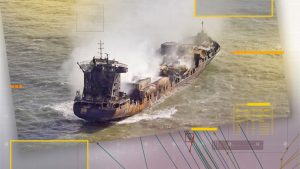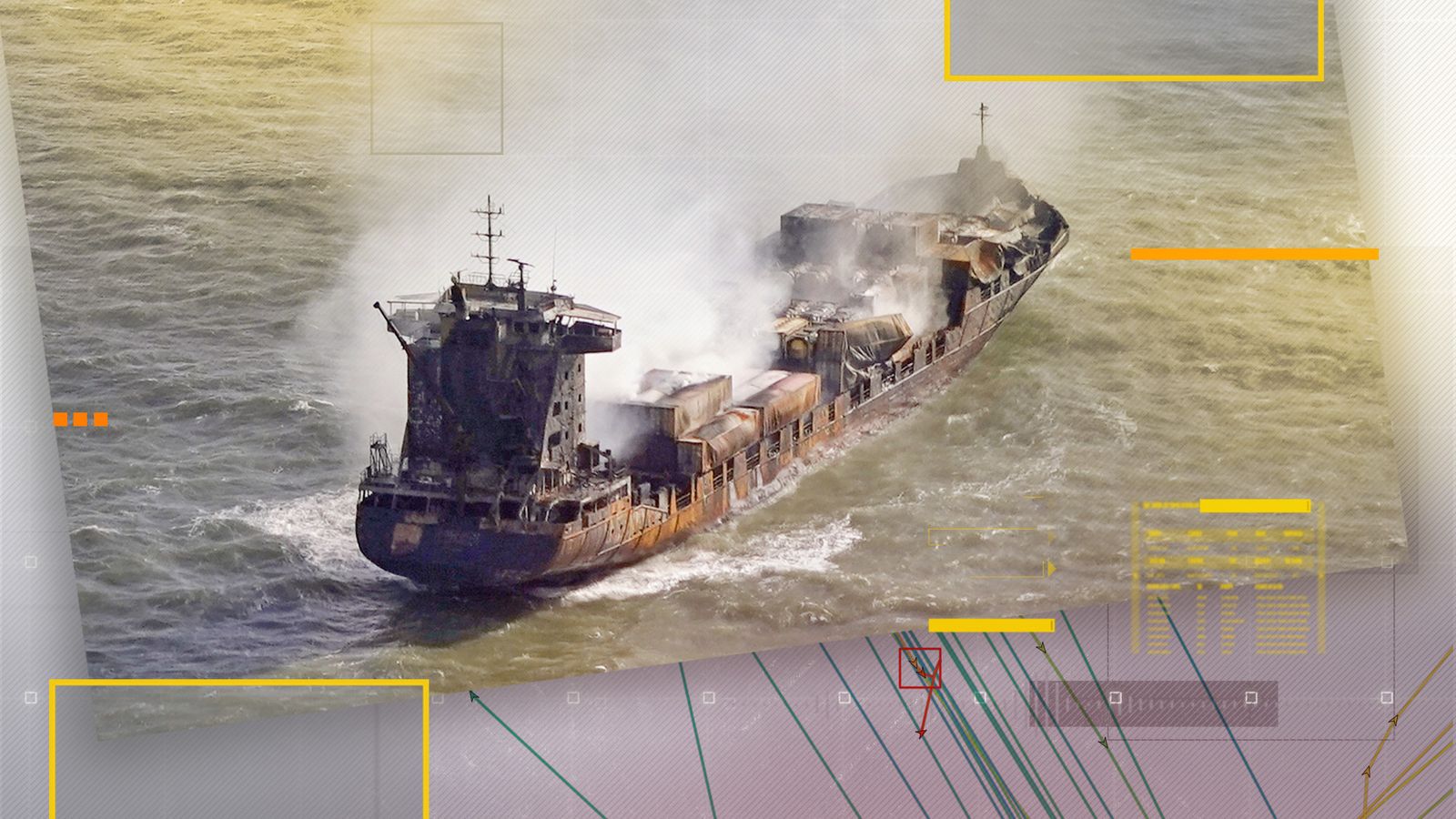
Discover the 12 most dramatic shipping accidents ever caught on camera. Explore causes, consequences, and lessons for maritime safety from these real-life incidents that shocked the world and reshaped shipping regulations.
Why Shipping Accidents Matter
The sea has always been both a pathway of prosperity and a theatre of risk. Despite technological progress, shipping remains one of the most dangerous professions on Earth. Every day, thousands of ships traverse oceans carrying cargo, fuel, and passengers. When things go wrong, the consequences are often devastating — not just for crews and cargo, but also for the environment and coastal communities.
In the age of smartphones, port CCTV, and livestreaming, many of these tragedies and near-misses are now captured on camera. These videos bring the realities of maritime risk into public view, often going viral across social media. For seafarers, regulators, and shipowners, such footage is more than sensational: it serves as stark reminders of why safety of life at sea (SOLAS), the International Safety Management (ISM) Code, and continuous crew training remain cornerstones of maritime practice.
This article revisits 12 of the most infamous shipping accidents ever caught on camera. Each case highlights not only the sheer force of the sea but also the human errors, technical failures, and regulatory lessons that continue to shape modern maritime safety.
1. The Ever Given Blocking the Suez Canal (2021)
Few shipping accidents have captured global attention as dramatically as the Ever Given’s grounding in the Suez Canal. On 23 March 2021, high winds and suspected human error caused the 400-metre container ship to wedge diagonally across one of the world’s busiest waterways.
CCTV and drone footage showed the vessel’s bow embedded in the canal bank while tugboats desperately tried to free it. The blockage halted more than 400 ships, costing global trade an estimated $9–10 billion per day.
The incident underscored vulnerabilities in chokepoints and prompted calls for enhanced vessel traffic management and contingency planning by the IMO and the Suez Canal Authority.
2. Costa Concordia Disaster (2012)
On the night of 13 January 2012, the luxury cruise ship Costa Concordia struck rocks off Isola del Giglio, Italy. Amateur videos recorded the ship listing heavily as thousands of terrified passengers scrambled to evacuate.
The disaster killed 32 people and became one of the most infamous examples of human error in navigation. The master, Captain Francesco Schettino, was later found guilty of manslaughter.
Captured footage of the chaotic evacuation raised serious questions about crew training, muster drills, and bridge resource management, leading to revisions in SOLAS evacuation procedures.
3. Beirut Port Explosion (2020)
Although technically an industrial blast rather than a ship collision, the Beirut port explosion was closely tied to maritime cargo. On 4 August 2020, 2,750 tonnes of improperly stored ammonium nitrate — seized from a ship years earlier — ignited, causing one of the largest non-nuclear explosions in history.
Multiple mobile phone videos captured the fire, the rising mushroom cloud, and the shockwave that devastated Beirut, killing over 200 and injuring thousands.
This tragedy highlighted systemic failures in port state control, hazardous cargo management, and long-term regulatory oversight.
4. MV Rena Grounding in New Zealand (2011)
On 5 October 2011, the container ship Rena struck the Astrolabe Reef off Tauranga, New Zealand. Video footage showed containers tumbling into rough seas as the ship broke apart over several months.
The incident spilled hundreds of tonnes of fuel oil and became New Zealand’s worst maritime environmental disaster.
It brought international attention to navigational safety near sensitive ecosystems, emphasising the importance of ECDIS (Electronic Chart Display and Information System) training and the role of classification societies in verifying safe voyage planning.
5. Hyundai No. 105 Capsizing in Busan (2013)
Port CCTV in South Korea captured the Hyundai No. 105, a cargo ship, capsizing during cargo loading operations at Busan port. Within minutes, the ship listed heavily, sending containers and vehicles crashing into the water.
The footage became a key training video for maritime academies, stressing the importance of stability calculations, proper ballast management, and adherence to the Load Line Convention.
6. The Sinking of MV Sewol (2014)
Perhaps one of the most haunting maritime accidents captured live was the MV Sewol ferry disaster in South Korea. On 16 April 2014, the overloaded ferry capsized with hundreds of high school students onboard.
Videos taken by survivors showed water flooding corridors as passengers were told to “stay put” — a fatal decision.
The tragedy killed 304 people and spurred massive public outrage. Investigations exposed issues of overloading, poor emergency training, and corruption in ship inspections.
7. Maersk Honam Fire (2018)
On 6 March 2018, a catastrophic fire broke out aboard the ultra-large container ship Maersk Honam in the Arabian Sea. Dramatic footage showed flames engulfing stacks of containers, some believed to contain dangerous chemicals.
The fire raged for days, killing five crew members.
The accident prompted the IMO to revisit regulations on container cargo declarations, firefighting systems for mega-ships, and the safe carriage of hazardous materials.
8. Hoegh Osaka Grounding in Southampton (2015)
Spectacular drone footage recorded the car carrier Hoegh Osaka after it grounded and developed a 45-degree list in the Solent, UK.
The vessel’s cargo of luxury cars — BMWs, Jaguars, and Land Rovers — was left hanging precariously.
Investigations found that improper ballast management caused instability. Thankfully, no lives were lost, but the footage became a case study in stability awareness and cargo securing.
9. The Black Sea Collision: Youzarsif H and Soya (2018)
In November 2018, Turkish coast guard cameras captured the collision of the bulk carrier Youzarsif H with the tanker Soya in the Bosphorus Strait. The dramatic footage showed sparks and flames as steel scraped steel in one of the world’s busiest waterways.
While damage was limited, the event raised alarms over traffic density in the Bosphorus, a strategic chokepoint where collisions could spark environmental disasters.
10. The El Faro Tragedy (2015)
Although there is little visual footage of the sinking itself, CCTV from Jacksonville port showed El Faro departing on its final voyage before being lost in Hurricane Joaquin.
The 790-foot container ship sank with all 33 crew aboard, making it the worst U.S. maritime disaster in decades.
The U.S. Coast Guard Marine Board of Investigation cited inadequate weather routing and poor management decisions. It reinforced the critical importance of satellite weather monitoring and the master’s judgment under extreme conditions.
11. Busan Bridge Collision (2019)
Viral footage in February 2019 showed a Russian cargo ship colliding with South Korea’s Gwangan Bridge. The vessel’s captain was later found intoxicated.
The crash tore through the bridge structure, shocking viewers worldwide and demonstrating the real-world consequences of alcohol impairment at sea, a violation of the STCW Code and maritime labour conventions.
12. Beirut’s Abandoned “Floating Bomb”: The MV Rhosus Connection
Though less publicised, footage resurfaced of the decrepit ship MV Rhosus, which carried the ammonium nitrate later linked to the Beirut explosion. Videos of its poor condition and abandonment in port symbolised how neglected ships can pose long-term threats.
This case reinforced the role of flag states, port authorities, and classification societies in preventing abandoned vessels from becoming global hazards.
Why These Accidents Matter
These 12 incidents remind us that shipping accidents are rarely isolated. They are often the result of compounded human, technical, and regulatory failures. When captured on camera, they not only shock the public but also serve as powerful case studies for maritime safety training worldwide.
From the Ever Given’s blockage of world trade to the Costa Concordia’s lessons on bridge management, each event has reshaped how seafarers, regulators, and shipowners approach risk.
FAQ: Shipping Accidents Caught on Camera
1. Why are so many shipping accidents captured on video today?
With widespread port surveillance systems, smartphones, and drones, accidents are more likely than ever to be recorded in real-time.
2. What is usually the main cause of shipping accidents?
Most accidents involve a combination of human error, technical failures, and environmental factors such as storms or poor visibility.
3. Do these videos help improve maritime safety?
Yes. Footage is often used in investigations, simulator training, and safety campaigns, providing real-life learning opportunities.
4. Which conventions govern safety at sea?
The most important include SOLAS (Safety of Life at Sea), MARPOL (pollution prevention), STCW (training and certification), and the Load Line Convention.
5. Are mega-ships more prone to accidents?
Not inherently, but their size magnifies consequences — from canal blockages to fires that are harder to control.
6. What role do classification societies play?
Bodies like DNV, Lloyd’s Register, and ABS certify vessels, ensuring compliance with international rules to prevent accidents.
7. Can we ever fully prevent shipping accidents?
Probably not, but through technology, training, and stricter enforcement, risks can be greatly reduced.
Conclusion: Learning from Accidents, Building Safer Seas
Maritime transport remains the backbone of global trade, but it is not without risks. These 12 accidents — many immortalised on video — remind us of shipping’s fragility in the face of human error, natural forces, and technical limits.
Every clip shared online is more than a spectacle; it is a lesson in safety, regulation, and responsibility. For seafarers, educators, and regulators, these incidents provide vital reminders of why the maritime industry must constantly adapt and improve.
By learning from the past and embracing new technologies and regulations, the shipping community can move closer to its ultimate goal: safer ships and cleaner seas for all. 🌊⚓


THANK YOUUUUUU!